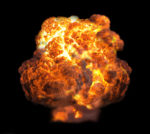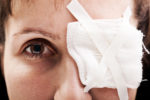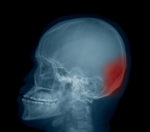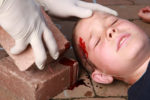Cerebrospinal fluid is a type of body fluid which looks very similar to water. It is a liquid that is clear and colourless. One of its main functions is to protect the central nervous system from damage. It provides mechanical protection and is found surrounding the brain and the spinal cord. The brain produces around […]
Types of Head Injuries
Common head injuries include:
- Concussion: A mild traumatic brain injury resulting from a blow to the head, leading to temporary loss of brain function. Symptoms may include confusion, headache, dizziness, and memory loss. Learn more about concussions and their management.
- Cerebral Contusion: Bruising of the brain tissue caused by a direct impact, leading to bleeding and swelling within the brain. This can result in prolonged unconsciousness, behavioural changes, and coordination issues. Understand the implications of cerebral contusions.
- Cerebral Compression: Increased pressure on the brain due to internal bleeding or swelling, which can be life-threatening. Symptoms include severe headache, vomiting, unequal pupil sizes, and decreased consciousness. Immediate medical attention is essential. Recognise and respond to cerebral compression.
- Skull Fractures: Breaks or cracks in the skull bone, which may or may not involve underlying brain injury. Signs include visible deformity, bruising around the eyes or behind the ears, and clear fluid leaking from the nose or ears.
Immediate First Aid Steps
For effective management of head injuries:
- Ensure Safety: Before assisting, ensure the environment is safe for both you and the injured person.
- Assess Responsiveness: Gently check if the person is conscious by asking simple questions. Avoid shaking them.
- Call Emergency Services: If the person is unconscious, has a seizure, or shows signs of severe injury, dial 999 or 112 immediately.
- Stabilise the Head and Neck: Minimise movement to prevent potential spinal injuries. Place your hands on either side of their head to keep it aligned with the spine.
- Control Bleeding: For external wounds, apply gentle pressure with a clean cloth. If a skull fracture is suspected, avoid direct pressure on the wound.
- Monitor Breathing and Consciousness: Keep a close watch on their breathing and level of responsiveness. Be prepared to perform CPR if necessary.
- Avoid Giving Food or Drink: Do not offer anything to eat or drink, as it may cause choking or complicate medical procedures.
- Place in Recovery Position: If the person is unconscious but breathing, and you need to leave them to call for help, place them in the recovery position to maintain an open airway. Learn how to correctly position someone in the recovery position.
Preventing Head Injuries
To reduce the risk of head injuries:
- Wear Protective Gear: Use appropriate helmets during activities like cycling, skateboarding, or contact sports.
- Ensure Home Safety: Install handrails on staircases, use safety gates for young children, and remove tripping hazards to prevent falls.
- Adhere to Workplace Safety: Follow safety protocols and wear required protective equipment in hazardous work environments.
- Practice Road Safety: Always wear seat belts, use child car seats appropriately, and avoid distractions while driving.
Further Resources
Expand your knowledge on head injuries and first aid:
For comprehensive first aid training, consider enrolling in our First Aid at Work Annual Refresher (VTQ) course.






